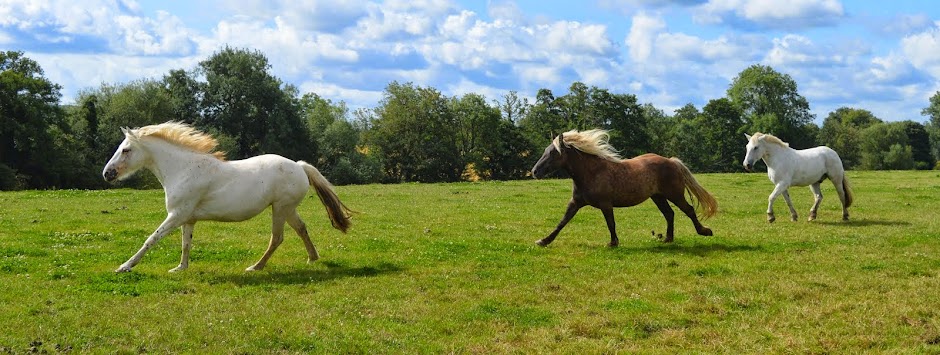No, not me. I do fancy doing a long ride one day, but not this long! I am currently reading the above titled book by a chap called Tim Cope who rode 10,000kms (!) across the Eurasian steppe from Mongolia to Hungary. Took him over 3 years......
Makes my ambition to ride from our UK house to our French house one day seem somewhat tame.....
Anyway, this is an interesting read. For a start, Mr Cope couldn't actually ride a horse when he started. Pretty much straight away, his horses got nicked (not for the last time, as it turned out). He acquired a dog, and what sounds like a serious vodka addiction along the way. And learned lots of interesting stuff.
Here are some excerpts that I particularly like.....
"When Dashnyam climbed back onto his horse, I watched him closely. Observing a custom universal among horsemen the world over, he carefully approached his black gelding from the left-hand side and eased into the saddle. Horsemen in the Western world believe this tradition originates from a time when cavalrymen carried swords on their right leg. On the steppe, however, among the descendants of those who introduced horses and cavalry warfare to the West, there is a belief about this custom that is probably older than both the Iron Age and Bronze Age. In a culture where the sun has always been worshipped and gers still strictly face south toward the life-giving orb, the word for "left" in Mongolian, baruun, is the same as the term for "east". To approach a ger from the east or mount a horse from the left is to approach in the same direction as the sun passes through the sky. To approach from the right and therefore the west is the sign of an enemy and can only invite trouble."
"Mongolians believe the spirit of a horse can live on in its hair, even long after death, and in the past, nomad warriors collected the hair from their best stallions to weave into a sulde or "spirit banner", which served to bring good luck and as a way of harnessing the spirit of nature"
An observation he makes after waking up freezing cold one winter morning in Kazakhstan:
"The horses, by comparison, didn't seem to be suffering-and for good reason. Descendants of horses that had survived natural selection over thousands of years, they were equipped with a physiology uniquely adapted to the extremes of the steppe.....their hairs, lifted slightly away from the body by special muscles under the skin, gave them the ability to regulate heat loss. Later, in the Ukraine and Russia, where people had a more Western approach to horses, I was told that leaving horses in the open without winter blankets, as nomads did, was unimaginably cruel. I came to think that this view was based on one of several misconceptions that many Westerners hold in relation to the natural horse and therefore the culture of horsemanship on the steppe. Horses in Europe, after all, are blanketed largely to prevent the horse from growing a long winter coat....and if a horse has been blanketed from a young age, the muscles under the skin that control the movement of the hair and thus regulate heat are not able to develop. The horses are therefore unable to keep themselves warm, the need for blankets being a human-induced one"Well worth a read, lots of info about the history of the regions he travels, more recent (and at times quite harrowing reading) as well as during Genghis' 13th century journey of conquest. And as you can see, there are some stunning pictures.....







No comments:
Post a Comment
I like comments, please leave them, but have to moderate them because there are some strange people Out There.......thank you for your patience :-)